Foreign
If Putin wins, expect the worst genocide since the Holocaust
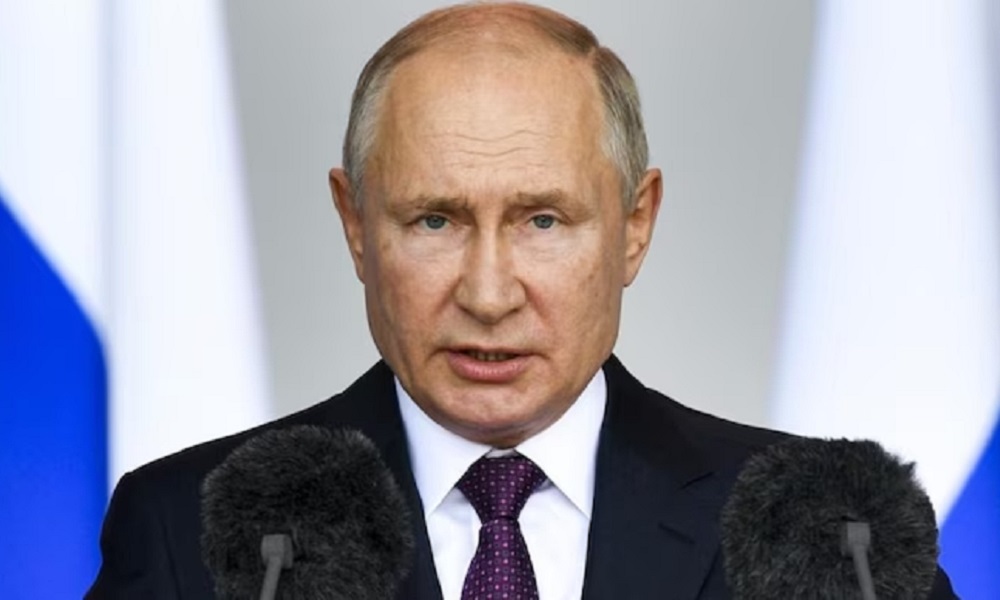
Today, Karolina Hird of the Institute of the Study of War in Washington DC considers the price for ordinary Ukrainians.
Over 800 days into Russia’s full-scale invasion of Ukraine, it is easy to see the war as merely lines and colour-coding on a map. While the lines and the military movements they represent matter, those abstractions obscure the human realities behind those lines.
To be clear from the start: Russia is actively, undeniably carrying out a genocide to destroy Ukrainian identity and independence. It does this by utilising ethnic cleansing campaigns, sexual violence, and the mass deportation of Ukrainian children as part of a “forced Russification” effort. I have been following this from Washington ever since the war began.
As such, if Russia wins, the worst genocide on European soil since the Holocaust is almost guaranteed.
The Kremlin has loudly proclaimed its intent to destroy Ukraine as a state and a nation. Russian President Vladimir Putin’s 2021 essay “On the historical unity of Russians and Ukrainians,” called Ukrainians a confused people, unjustly and forcibly torn away from Russia by nefarious external forces. The Kremlin-controlled Russian Orthodox Church frequently espouses the “trinity doctrine,” the idea that Ukrainians (and Belarusians) belong to the Russian “nation” and must be “reunified.”
Russian politicians and pundits frequently call Ukraine an “artificial concept” and a “fake country” that does not deserve to exist. Russia has adopted a whole-of-government approach to build the narrative that Ukraine and Ukrainians have no right to exist as a sovereign people in a sovereign state.
Given these officially stated aims, are the genocidal actions Russia has taken to pursue them any wonder? The Convention on the Prevention and Punishment of the Crime of Genocide defines genocide as acts committed “with intent to destroy, in whole or in part” a specific group.
The destruction need not be accomplished physically – actions taken to destroy a group’s identity without killing all members of the group also constitute genocide. The Russian genocidal project includes horrific acts of violence, to be sure, including summary executions, sexual assaults, arbitrary detentions, and torture. It includes the forcible deportation of children from Ukraine to Russia, which the Genocide Convention explicitly specifies also constitutes genocide.
The deportation of Ukrainian children is a key component of Russia’s genocidal project – one that would only be extrapolated if Russia were to win the war and the rest of the country were seized by force. The Ukrainian government has verified the deportation of 19,546 Ukrainian children as of April 29, 2024. The true number is likely much, much higher considering that Ukrainian officials can only verify the deportation of children who have someone to vouch for their identity, leaving orphans and children without guardians unaccounted for.
The Kremlin has facilitated and celebrated the deportation of children to Russia, claiming it offers children an opportunity to rest and rehabilitate after living in a war zone (which Russia created by invading Ukraine). These children are subject to Kremlin-approved re-education programmes along Kremlin-accepted social, linguistic, and cultural lines and sometimes forced into military training.
Russian authorities have deported children to “rest” and “relaxation” camps throughout Russia, one of which in Russia’s Primorsky Krai is closer to Alaska than to Ukraine. High-ranking Kremlin officials, including Putin’s Commissioner on Children’s Rights Maria Lvova-Belova, have personally adopted deported Ukrainian children. She now has an arrest warrant, issued by the International Criminal Court (ICC).
Tens of thousands of Ukrainian young people are growing up under Russian military occupation, forcing them to abandon their language, culture, and history as the Kremlin seeks to destroy “in whole or in part” Ukrainian identity. This would become an entire generation were Moscow to subjugate Ukraine. Those already living under Russian occupation suffer daily efforts by Russian occupation authorities to strip them of their Ukrainian identity.
Russian authorities co-opted the school system in occupied Ukraine under the euphemism of bringing it up to the “Russian standard”: teaching only the Kremlin-approved version of Russian history in which Ukraine has no independent identity and depriving children of access to Ukrainian-language education. Russian occupation authorities also use schools to militarise children, instilling in them Russian “military-patriotic ideals” and establishing a direct pipeline into Russian military–affiliated organisations to facilitate their future recruitment into the Russian military to fight against their compatriots.
The thread of destruction and eradication runs through daily life in occupied Ukraine. Russian occupation officials have discussed forcibly deporting or summarily executing civilians who display characteristics deemed to be pro-Ukrainian or anti-Russian. Russian administrators use the threat of withholding access to basic goods and services to coerce Ukrainians to give up their Ukrainian passports for Russian ones, permanently changing the Ukrainian spelling of their names to the Russian version. Russian economic “enrichment” and infrastructure “development” projects cripple the ability of occupied areas to exercise economic self-sufficiency, generating devastating dependencies on the Russian federal government and driving a wedge between Kyiv and occupied territories.
Again, this constitutes genocidal behaviour, even when it is not exterminating people.
That said, Russia’s efforts to destroy Ukraine include ethnically-cleansing occupied Ukraine by replacing Ukrainians with Russian citizens. Russian officials claim that Russia has “accepted” over 4.8 million Ukrainians, including 700,000 children, since the beginning of the war.
There is no way to verify this number, but it emphasises the scale of movement to Russia from Ukraine since 2022, all of which occurred in the coercive context of Russian military occupation. The Kremlin is repopulating occupied Ukraine with Russian citizens to fundamentally alter its demographics and complicate future reintegration efforts. Based on examples of similar ethnic cleansing in the past, many will have inevitably died as a consequence. And that is before one even considers the blatant executions of innocent civilians by Russian soldiers, or the deliberate targeting of civilian population areas.
International legal procedure is set up to deal with atrocities after they happen. This is why Russian war crimes in Bucha, Izyum, Kherson City, and other liberated settlements have received widespread international attention and condemnation, and deservedly so. This is why the ICC has issued arrest warrants for Putin and Lvova-Belova, as their crime of facilitating the deportation of children is visible and evident.
The international humanitarian community is less effective, however, at addressing what happens daily behind the frontlines. In many cases, Russia’s genocidal project in Ukraine is banal, mundane, and hard to track and prove. But every aspect of Russia’s occupation of Ukraine is deliberate and flows from Putin’s initial justification for the invasion. It is meant to make real the Kremlin lie that Ukraine has no right to exist and that there is no such thing as a Ukrainian people.
Ukraine is fighting a war for the survival of the Ukrainian people. Russia’s genocidal project is the purpose of Russia’s military operations, and Ukraine’s supporters must not separate the two. Should Ukraine fall to Russia on the battlefield, the rest of its people will fall victim to the genocidal project Russia is conducting in the lands it already controls, which “only” constitutes about 20 per cent of the country’s legal territory. Imagine how many millions would be victims of this abhorrent behaviour if it reaches 30 per cent, 40 per cent, or even 100 per cent.
Indeed, many military experts would argue that Nazi-style tactics would be the only way to quell a population so vehemently opposed to Russia’s control. We would see horrors unfold daily.
We must face this reality squarely and stop blithely talking about offering “territorial” concessions to “stop the fighting” without forcing ourselves to confront the horrors that such concessions will inflict on the people living in those lands.
Putin’s invasion was never about seizing limited bits of land. It was always about destroying a people. Ukraine’s supporters must therefore recommit themselves to the project of saving this people and showing that they will resist and defeat aggression and genocide on this scale.
Karolina Hird is Russia Deputy Team Lead and Analyst at the Institute for the Study of War in Washington DC.
She has contributed to the Telegraph’s daily podcast ‘Ukraine: The Latest’, your go-to source for all the latest analysis, live reaction and correspondents reporting on the ground. With over 85 million downloads, it is considered the most trusted daily source of war news on both sides of the Atlantic.
You can listen to one of her extended interviews on Russian war crimes here.
Foreign
Trump defends plan to use Qatari luxury jet for Air Force One

US President Donald Trump has defended the White House plan to receive a luxury jumbo jet from Qatar to be used as America’s Air Force One presidential plane.
“They’re giving us a gift,” Trump told reporters at the White House on Monday, adding that he would be “a stupid person” if he did not accept it.
In an earlier statement, a Qatari spokesman said it would be “inaccurate” to refer to the plane as a gift. He said the transfer of an aircraft for “temporary use” was under discussion between the two countries.
The news comes as Trump is set to visit Qatar this week as part of the first major foreign trip of his second term.
Speaking on Monday, Trump said that the US had helped the other country “a lot over the years in terms of security and safety” and that he had “a lot of respect for the leadership” of the country.
He went on to say it would be a “very nice gesture” if Qatar provided the US with a Boeing jet while his government continued to wait for two new ones to be provided directly by Boeing itself.
The potential value of the plane and its handling has raised legal and ethical questions among critics on the political left and right.
The US Constitution has a provision known as the Emoluments Clause, which restricts what gifts US presidents can accept from foreign governments. It was designed to prevent leaders from becoming beholden to foreign governments.
On social media, Democratic Senator Adam Schiff from California quoted a section of the US Constitution that said no elected official could accept “any present… of any kind whatever” from the leader of a foreign state without congressional approval.
Congressman Ritchie Torres, a New York Democrat, called on the Government Accountability Office to investigate, saying the plane could “constitute the most valuable gift ever conferred on a president by a foreign government”.
But there was criticism, too, from some of Trump’s staunchest supporters.
Daily Wire podcaster Ben Shapiro lambasted the plane deal on Monday as “skeezy”.
“Is this good for President Trump?” Shapiro said. “Is it good for his agenda? Is it good for draining the swamp and getting things done? The answer is no, it isn’t.”
Far-right influencer Laura Loomer also criticised the move. She posted to say she would “take a bullet” for the president, but that any decision to accept the jet would be “such a stain” on the administration.
White House Press Secretary Karoline Leavitt said on Sunday that “any gift given by a foreign government is always accepted in full compliance with all applicable laws. President Trump’s administration is committed to full transparency”.
The White House’s current fleet includes two Boeing 747-200B planes customised for presidential use with special communications equipment and features like a state room, office and conference room. The planes have been in use since 1990 and 1991.
Qatar is said to be offering a version of a Boeing 747-8, a much newer model that ABC News reports has been upgraded into a “flying palace”.
The plane, reported to be worth about $400m (£303m), would not be ready for use right away if provided to the US, as it would need to be retrofitted and cleared by security officials, sources told CBS, the BBC’s US partner.
Boeing has already been contracted to directly provide the White House with two 747-8s directly, but Trump complained earlier this year that the firm was behind schedule.
His team negotiated to receive these during his first term in office, though Boeing has cautioned that they will not be available for two or three more years.
Qatar – a country with which Trump has long had a positive relationship – has also previously given private jets as gifts to other countries, including Turkey.
This would not be the first Trump-related deal with Qatar. Last month, his company signed a deal to build a luxury golf resort there, marking its first foreign deal since the Republican returned to office in January.
According to CBS, the plane that Trump could acquire would be donated at the end of his term to his presidential library, which is a collection of artefacts related to a US leader’s time in office.
Air Force One planes usually carry over to other administrations. According to the National Archives, only the presidential library for Ronald Reagan has an Air Force One jet.
Trump, a businessman-turned-president, has been no stranger to conflict-of-interest accusations since taking office in 2017. During his first term, critics accused him of enriching himself in a number of ways, including through his hotel in Washington DC. A lawsuit followed, but was never concluded.
Commenting on the potential transfer of the plane, David Super, a law professor at Georgetown University, told the BBC: “It certainly stinks, but formally it’s a transfer to the [US] government, not the office holder.”
However, the jet could be viewed as an illegal personal gift to Trump if he is able to use it in his private life after leaving office, Prof Super added.
As for who could protest such a move – Congress could pass a resolution denouncing it, said Prof Super, albeit this would be unlikely given the Republican dominance on Capitol Hill, and it would not stop the actual transfer.
Foreign
Why Popes Change Their Name and What Is the Significance of Leo XIV

The world watched as white smoke rose from the Sistine Chapel, signaling the election of a new pope: Cardinal Robert Francis Prevost, now known as Pope Leo XIV. While the ceremonial elements of his ascension were rich in tradition, one symbolic gesture stood out—the choice of his papal name.
The decision to adopt a new name upon becoming pope is far more than a formality. It is a profound act rooted in centuries of Catholic history, carrying theological, historical, and pastoral significance. As the Church welcomes its new leader, attention turns to the name Leo XIV, and what it could mean for the future of global Catholicism.
Why Do Popes Change Their Names?
Though not mandated by Church law, changing one’s name upon papal election has become a long-standing tradition in the Roman Catholic Church. The practice began in 533 AD when Pope John II renounced his birth name, Mercurius, which had pagan roots.
Key reasons popes change their names:
Symbolic rebirth as the spiritual head of the Catholic Church
A chance to align with a legacy or emulate a previous pope or saint
To communicate the themes and direction of their papacy
Much like biblical figures—such as Saul becoming Paul or Simon renamed Peter—the new name represents a divine calling and transformation.
Historical Origins of Papal Name Changes
The first recorded instance of a papal name change, by Pope John II, set a precedent for future pontiffs. Over time, the tradition became entrenched as a way for popes to:
Distance themselves from controversial associations
Embrace names that resonate with spiritual reform
Adopt titles that offer reassurance during turbulent times
Fewer than 10 popes have retained their birth names. For instance, Pope Marcellus II in 1555 and Adrian VI in 1522 are rare examples who did not alter theirs.
The Significance of the Name “Leo XIV”
The newly elected pope’s decision to take the name Leo XIV is rich with meaning and draws directly from Pope Leo XIII, a pivotal figure in Church history.
Key Associations with the Name Leo:
Pope Leo I (Leo the Great): Strengthened papal authority and defended Rome from invaders
Pope Leo XIII: Known for championing social justice, workers’ rights, and engaging with the modern world through the 1891 encyclical Rerum Novarum
By aligning with this legacy, Pope Leo XIV signals an intention to:
Address global inequality and labor conditions
Tackle modern ethical dilemmas, such as artificial intelligence and climate change
Foster dialogue within the Church and across faiths
His name implies a strong, reform-driven leadership, rooted in both tradition and progress.
Who Is Pope Leo XIV?
Born Robert Francis Prevost in Chicago, USA, Pope Leo XIV is the first American pope in the history of the Catholic Church.
Background Highlights:
Born in 1955, former Augustinian priest
Served as Bishop of Chiclayo, Peru, where he advocated for indigenous rights and pastoral outreach
Most recently led the Vatican’s Dicastery for Bishops, overseeing global bishop appointments
His selection reflects a shift towards a more globally representative papacy, echoing the reach of Pope Francis, his immediate predecessor.
Are Any Papal Names Off-Limits?
While there is no official list of banned names, tradition discourages certain choices.
The name Peter II has never been used, out of reverence for Saint Peter, the first pope, and due to apocalyptic prophecies suggesting “Peter the Roman” will be the last pope.
Names associated with controversial historical figures, like Urban VIII (linked to the persecution of Galileo), are also typically avoided.
How the Name Is Announced
Following the conclave’s decision, the senior cardinal deacon appears on the central balcony of St. Peter’s Basilica to deliver the iconic Latin phrase:
“Habemus Papam – We have a pope!”
The full announcement includes:
The pope’s baptismal name, translated into Latin
His newly chosen papal name
The traditional final word: “Franciscum” (or the new name, in Latin)
In the case of Pope Leo XIV:
“Robert Francis Prevost” was presented in Latin as Robertum Franciscum
His papal name was announced as Leo Quartus Decimus

Some names carry more weight due to frequent use and historic success:
Papal Name Number of Popes
John 21
Gregory 16
Benedict 15
Leo 14 (with Leo XIV)
Innocent 13
The name Francis, chosen uniquely in 2013, marked the first usage in papal history, breaking a pattern that had lasted over 1,000 years.
What This Means for the Church
Pope Leo XIV is expected to prioritize:
Social justice and protection of the poor
Ethical debates around technology and artificial intelligence
Greater involvement of the Global South in Church leadership
Environmental stewardship and climate action
His papacy begins at a time of profound challenge and transformation for the Church, and his name hints at a bold, reformist agenda balanced by theological consistency.
Conclusion: A Name That Signals Direction
The name Leo XIV is more than a formality—it’s a powerful declaration of intention, alignment, and inspiration. As Pope Leo XIV steps into one of the world’s most influential spiritual roles, his choice pays homage to the Church’s past while casting a hopeful vision for its future.
From American roots to global responsibilities, his leadership may well define Catholicism’s engagement with the modern world for decades to come.
Foreign
Pope Leo XIV, celebrates first Mass, wants Church to be beacon of light

Pope Leo XIV celebrated his first Mass on Friday in the Sistine Chapel where he was elected less than 24 hours earlier, warning of the dangers caused by a lack of faith and hoping the Catholic Church could be a beacon lighting the world’s “dark nights”.
Leo, the former Cardinal Robert Prevost and the first U.S. pope, looked calm as he delivered the Mass in the famous, frescoed chapel with the same cardinals who chose him to be the 267th pontiff and the successor to Pope Francis.
Dressed in relatively simple white and gold vestments, Leo, who was born in Chicago but spent two decades as a missionary in Peru, said a few words in English before continuing his homily in fluent Italian.
In the homily, Leo, 69, painted a picture of the Church he would like to see, saying he would seek to serve as the “faithful administrator” for the Church as a whole.
The new pope, who leads 1.4 billion Catholics around the world, acknowledged that the Christian faith is sometimes “considered absurd” and the preserve of “the weak and unintelligent”.
“A lack of faith is often tragically accompanied by the loss of meaning in life, the neglect of mercy, appalling violations of human dignity, the crisis of the family and so many other wounds that afflict our society,” he said.
MAY 18 INAUGURATION
An inauguration Mass for Leo will be held in St. Peter’s Square on Sunday May 18, the Vatican said.
World and religious leaders are invited to the inauguration, which marks the formal launch of a papacy. Pope Francis’ inauguration in 2013 attracted a crowd estimated at 200,000 people.
The new pope will also leave senior Vatican officials in their roles for the time being, giving him time to decide before making definitive appointments, the Vatican said.
All Vatican senior officials, appointed for five-year terms, serve at the pleasure of the pope. A new pontiff usually rolls over existing mandates at least initially before deciding whether to change key positions.
The pope was elected at the end of a two-day conclave that was wrapped up on Thursday evening when white smoke billowed from the chimney on the Sistine Chapel.
Item 1 of 8 Pope Leo XIV conducts Mass in the Sistine Chapel at the Vatican, May 9, 2025. Vatican Media/Simone Risoluti Handout via REUTERS
Given the nature of the conclaves, when cardinals are shut away from the world and sworn to secrecy, little or nothing is likely to emerge – at least for now – about how Leo obtained the required two-thirds majority of the vote so swiftly.
The successor to Pope Francis, who died last month at the age of 88, inherits a number of major challenges, ranging from a budget shortfall to divisions over whether the Church should be more welcoming towards the LGBT community and divorcees, and should let women play a greater role in its affairs.
He will also have a packed agenda, with the Vatican celebrating a Holy Year that brings millions of additional tourists to Rome.
THE FIRST US POPE
Before Leo’s election, U.S. cardinals had largely been written off as papal contenders because of a widespread assumption that the global Church could not be run by a superpower pope.
However, he also holds Peruvian citizenship, meaning that he has deep knowledge of both the West and less developed nations.
U.S. President Donald Trump was quick to congratulate Leo. However, the new pope has a history of criticizing Trump and Vice President JD Vance’s policies, according to posts on the X account of Robert Prevost.
Leo worked for decades in the north of Peru, first as a missionary and later as Bishop of Chiclayo from 2015 to 2023. Catholics took to the streets of the small city in northwestern Peru, and church bells rang out to celebrate the election of a man who they embrace as one of their own.
One of the clues to what kind of a Church leader Leo will be was in his choice of name. The last pope with this name was Leo XIII, who led the Church from 1878-1903. He was known for his devoted focus to social justice issues.
Prevost became a cardinal only in 2023. He has given few media interviews and is known to have a shy personality.
Francis brought him to Rome two years ago to head the Vatican office in charge of choosing which priests should serve as Catholic bishops, meaning he has had a hand in selecting many of the world’s bishops.
-
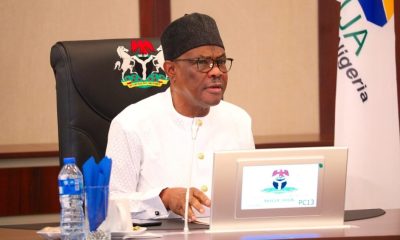
 News23 hours ago
News23 hours agoJust in: Wike admits Fubara alongside 2 govs visited him on reconciliatory moves
-

 News20 hours ago
News20 hours agoGo home to face corruption probe, protesters in London tell Kyari (Photos)
-
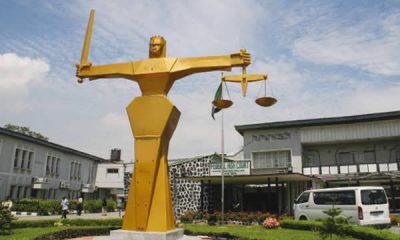
 News23 hours ago
News23 hours agoAMCON, Others Dragged to Court Over Alleged Undervalued Sale of Ibadan Disco for $62m
-

 News7 hours ago
News7 hours ago2nd Anniversary: Tinubu to commission Abuja International Conference Centre – Wike
-
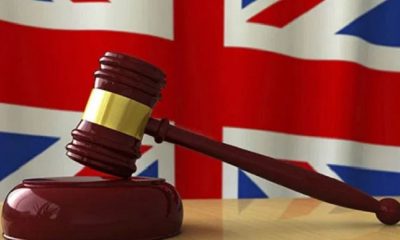
 News16 hours ago
News16 hours agoUK unions slam Govt’s decision to end care worker visas
-
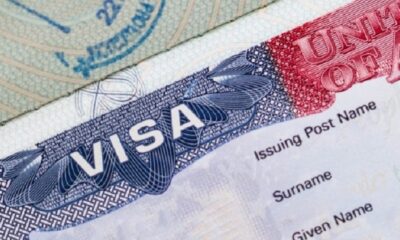
 News6 hours ago
News6 hours agoUS revokes governor’s visa
-

 News23 hours ago
News23 hours agoAfter quarter of a century, NDLEA gets forensic labs in Abuja, Enugu, trains 20 officers+Photos
-

 News15 hours ago
News15 hours agoSAD! Woman, child electrocuted in Edo






